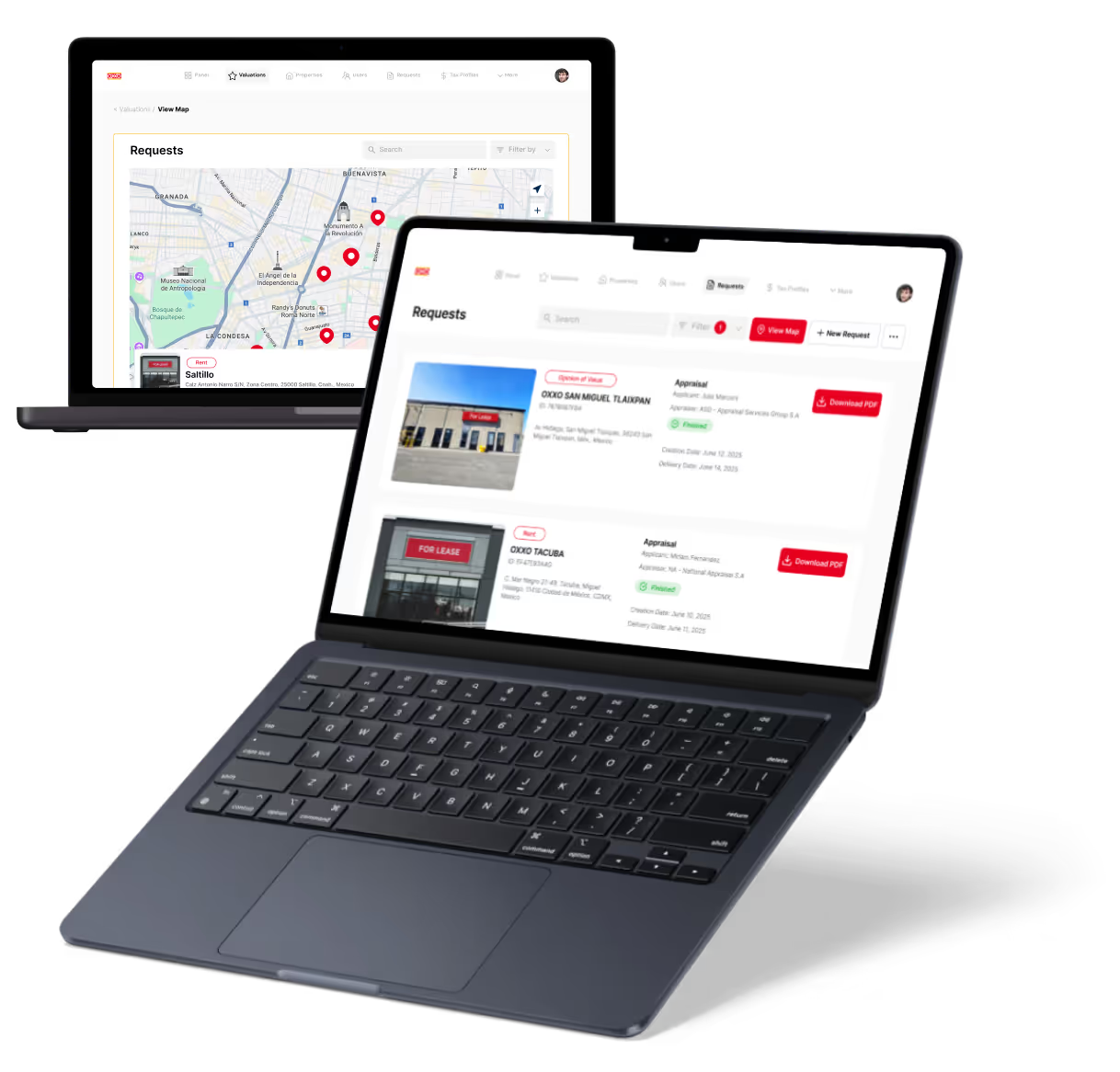Best no-code integration tools for businesses
19 min
read
Discover the best no-code integration tools for your business. Compare Zapier vs Make features, pricing, and capabilities to automate your workflows without coding.

Introduction
Looking for the best no-code integration tool for your business? connecting your essential business applications shouldn't require extensive coding knowledge.
No-code integration platforms have revolutionized how businesses automate their workflows, making it possible for anyone to create powerful connections between their favorite tools.
In this article, we'll explore the world of no-code integration platforms, with a special focus on industry leaders Zapier and Make.
We'll walk you through everything you need to know: from understanding what no-code integration is and why it matters, to essential features to consider when choosing a platform.
You'll discover detailed comparisons of pricing plans, connector libraries, automation capabilities, and real user experiences. Whether you're a small business owner looking to streamline operations or a team leader seeking efficient workflow solutions, this article will help you make an informed decision about the right no-code integration tool for your needs.
TL;DR
No-code integration platforms enable seamless app connections without coding expertise. Zapier stands out with 3,000+ app connections and user-friendly templates, while Make offers deeper customization with 1,900+ integrations. Choose Zapier for simplicity and accessibility, or Make for more advanced workflow control and customization options.
What is a no-code integration?
A no-code integration is an approach that enables users to connect different applications, systems, and data sources without writing any programming code.
It uses visual interfaces and pre-built connectors to allow businesses and developers to create integrations through simple drag-and-drop or point-and-click actions.
Why use a no-code integration platform?
No-code integration platforms reduce the time, cost, and technical expertise needed to connect various business systems.
These platforms enable team members with diverse technical backgrounds to manage data with minimal coding required. These platforms streamline workflows and accelerate development by simplifying complex integration tasks.
The result is enhanced collaboration across technical and non-technical team members.
For example, you can automatically sync customer data from your CRM to your email marketing platform, create workflows that move data from web forms to spreadsheets, and connect your e-commerce platform with your inventory management system, and set up automated invoice processing between accounting software and payment systems.
What to consider when choosing a no-code integration platform
Connector library
Look for the number and variety of pre-built app connections. Consider the quality and depth of popular app integrations. Check if custom connector options are available. Ensure regular updates and maintenance of connectors are provided.
Data transformation
Evaluate the built-in data mapping capabilities and formula and function support. Check for custom field mapping options and data format conversion tools.
Automation triggers and actions
Consider the available event-based triggers and scheduled automation options. Look for conditional logic support and multi-step workflow capabilities.
Error handling and debugging
Examine the clarity of error notifications and detailed error logs. Check for testing and validation tools along with troubleshooting guidance.
Scalability and performance
Assess data volume handling and processing speed. Look for concurrent operation support and resource allocation flexibility.
User access controls and security
Review role-based access control and data encryption standards. Check compliance certifications and available authentication methods.
API access
Evaluate API documentation quality and rate limits. Look for custom API support and how API versioning and updates are handled.
Cost and usage limits
Consider pricing models such as per user or per integration costs. Review transaction limits, storage limitations, and any additional feature costs.
Zapier

Zapier is an online automation tool that connects your apps and services. You can connect two or more apps to automate repetitive tasks without coding.
Zapier connects over 3,000 web applications through automated workflows called "zaps." Each Zap consists of a trigger in one app that automatically initiates an action in another.
A zap can be a simple action, like sending an email when a new lead is entered in a form, or a complex one, such as the ability to update multiple systems at the same time.
Pricing

Free Plan
- Basic Zap functionality
- Connect two apps
- Simple automation tasks
- Ideal for beginners and small businesses
Paid Plans
- Multi-step Zaps for complex workflows
- Filter conditions for refined automation
- Premium app integrations
- Advanced automation capabilities
- Multiple actions and triggers
- Enhanced workflow control
Rating on G2

G2 rates Zapier with 4.5/5 stars, with over 1300 reviews. Zapier is trusted by 2M+ companies since 2011 for seamless workflow automation without code.
“Zapier has so many options to automate tasks! We use it in so many ways. What do you like best about Zapier? It has options for us to connect different platforms we use together so that we can automate our tasks easily. We use it to collect information from customers, keep track of things in spreadsheets, automatically tag customers in our email database, and send automated email notifications internally. Great support also; if we ever have an issue, they usually help us resolve it promptly.” Alison R. Marketing Manager
Why Zapier?
Zapier stands out as a pioneer in the no-code integration space, with over a decade of experience serving 2M+ companies.
Its extensive connector library of 3,000+ apps and intuitive visual interface make it an ideal choice for businesses seeking to automate workflows without technical expertise. The platform's scalability from simple two-app connections to complex multi-step workflows means it can grow alongside your business needs.
Zapier's most distinctive feature is its "Zaps" system, which is based on pre-configured automation templates that users can easily customize. These templates dramatically reduce the learning curve, allowing even complete beginners to set up sophisticated workflows in minutes.
Case study: 12five Capital
12five Capital, a financial services company, faced significant challenges with their banking business correspondence management. Manual processes were creating bottlenecks and errors, hampering their ability to serve clients effectively.
LowCode Agency stepped in to transform their operations by developing a custom Glide app that automated calculations and streamlined document approvals.
To further enhance their workflow, 12five integrated Zapier to automate several critical processes. The integration enabled them to automatically generate Banking Business Correspondence (BBC) documents from Glide data and send them for client signatures.
Once signed, PDFs were automatically updated back into the app, maintaining a seamless document flow. The system also created daily data exports from linked sheets to maintain comprehensive logs in Asana, while automated emails containing chart data generated from Glide kept stakeholders informed.

The results were impressive: approval times dropped by 70%, team productivity increased by 50%, and they expanded their client base by 35%.
Pros
- Massive app integration library (3,000+ apps)
- User-friendly interface with drag-and-drop functionality
- Extensive template library for quick setup
- Reliable performance with good uptime
- Regular updates and new integrations
Cons
- Free plan limited to two-app connections
- Premium features can be costly for small businesses
- Complex workflows require paid plans
- Some advanced integrations need technical knowledge
- Usage limits on lower-tier plans
| Criteria | Zapier |
|---|---|
| Connector Library | 3,000+ pre-built app connections with regular updates |
| Data Transformation | Built-in formatter, custom field mapping, lookup tables |
| Automation Triggers/Actions | Event-based and scheduled triggers, multi-step actions (paid) |
| Error Handling | Email notifications, detailed logs, testing tools |
| Scalability | Handles high volume with paid plans, concurrent operations |
| User Access Controls | Team accounts, role-based access (enterprise) |
| API Access | Well-documented API, good rate limits, webhooks support |
| Cost and Usage Limits | Tiered pricing and transaction limits vary by plan |
Make

Make is a powerful automation platform that enables seamless integration between applications and workflow automation.
Through its intuitive visual designer and user-friendly interface, users can create, customize, and manage complex workflows without extensive technical knowledge. The platform offers connections to thousands of pre-built apps and supports integration with any public API, making it a versatile solution for various automation needs.
Pricing

Free Plan
- 1,000 operations per month
- 100MB data transfer
- Basic app integrations
- 2 active scenarios
- Manual scenario execution
- Basic mapping functions
- Ideal for testing and learning
Paid Plans
- Unlimited scenarios
- Advanced functions and iterators
- Error handling and data recovery
- Real-time execution
- Complex routing and filtering
- HTTP/SOAP/JSON modules
- Webhook support
- Binary data processing
- Advanced mapping functions
- Custom API integration
- Role-based access control
Rating on G2

G2 rates Make with 4.5/5 stars, with over 223 reviews. Users consistently praise its powerful automation capabilities, intuitive interface, and excellent customer support.
“The go-to for automation tool. What do you like best about Make (formerly Integromat)? Powerful automation tool; flexibility and customization of workflows; time savings on daily tasks; responsive and effective customer support.” Antoine B. Operational Excellence Consultant/Chief Technical and Process Officer.
Why Make?
Make stands out for its comprehensive customization options. Whether you're automating simple tasks or complex business processes, the platform provides extensive templates and tools to meet specific requirements.
Users can easily design workflows that connect multiple applications, process data, and execute actions automatically, streamlining their operations effectively.
Make offers advanced features for sophisticated workflow management. From data transformation and filtering to complex routing and error handling, the platform provides powerful tools to handle any automation scenario.
This makes it an ideal solution for businesses and individuals looking to optimize their processes, save time, and reduce manual work through intelligent automation.

As certified Make partners, we at LowCode Agency encourage the use of Make's robust automation capabilities to transform businesses.
We've chosen to partner with Make because they share our commitment to democratizing technology. Our expertise combined with Make's powerful platform allows us to deliver automation solutions that drive real business value, from streamlining operations to reducing manual work and accelerating growth.

Case study: Known Logistics
Known Logistics approached us because they were facing a challenge: they wewn’t able to provide a seamless and intuitive tracking experience for their customers.
Our solution was building an app that integrates with their existing databases and delivers real-time updates, which lead to enhancing their customers' experience and improving operational efficiency.
How we did this? Make's data synchronization capabilities, paired with Glide's interface design, transformed Known Logistics' fragmented tracking system.
While Glide provided the user-friendly portal, Make handled the crucial real-time data flow between Azure and NetSuite, enabling customers to access live shipment tracking, delivery updates, and documentation seamlessly in one place.
The synergy between Make's automation workflows and Glide's visual interface features resulted in a comprehensive tracking portal that met both technical requirements and user experience goals.
This example illustrates how Make's integration capabilities can enhance no-code platforms to deliver tailored business solutions.
Pros
- Visual drag-and-drop builder with intuitive workflow design
- Unlimited scenario routes available
- More API endpoints per integration (2x compared to Zapier)
- Cost-effective pricing structure
- Highly customizable templates across industries
- Mobile-responsive design capabilities
- Reliable customer support via email and live chat
- Visual module-based workflow arrangement
Cons
- Fewer total app integrations (1,900+ vs Zapier's 3,000+)
- Limited code execution capabilities
- Steeper learning curve for complex workflows
- More restricted design options compared to competitors
- Limited integration options for niche tools
- Complex interface may overwhelm beginners
- Platform focuses on no-code solutions
| Criteria | Make |
|---|---|
| Connector Library | 1,900+ pre-built app connections, supports any public API integration |
| Data Transformation | Advanced mapping functions, binary data processing, complex routing and filtering |
| Automation Triggers/Actions | Manual and real-time execution, unlimited scenarios (paid), HTTP/SOAP/JSON modules, webhook support |
| Error Handling | Error handling and data recovery features (paid plans) |
| Scalability | Free: 1,000 operations/month, 100MB data transfer, 2 active scenarios Paid: Unlimited scenarios, real-time execution |
| User Access Controls | Role-based access control (paid plans) |
| API Access | Custom API integration, webhook support |
| Cost and Usage Limits | Free tier available with basic features Paid plans offer unlimited scenarios and advanced features |
| Additional Features | Visual drag-and-drop builder, module-based workflow arrangement, mobile-responsive design, customer support via email and live chat |
| Limitations | Steeper learning curve for complex workflows, limited code execution capabilities, complex interface for beginners, focus on no-code solutions |
Comparison
When choosing between Zapier and Make, each platform serves different needs in the no-code integration space.
Zapier leads with over 3,000 app connections and an intuitive interface that makes automation accessible to beginners. Its "Zaps" system provides ready-to-use templates that simplify workflow creation, though premium features can be costly for small businesses.
Make, while offering fewer integrations (1,900+), compensates with more advanced customization options and cost-effective pricing. It provides detailed control over workflows through its visual designer and offers unlimited scenarios in paid plans. However, users should be prepared for a steeper learning curve to harness its full potential.
Choose Zapier if you prioritize ease of use and need access to the widest range of app integrations. Opt for Make if you require deeper customization capabilities and don't mind investing time to master a more complex but powerful platform.
Ready to transform your business with no-code integration? Don't let technical barriers hold your business back. At LowCode Agency, we specialize in implementing custom no-code solutions tailored to your specific needs. Contact us today to get a detailed quote based on your requirements.
Created on
December 20, 2024
. Last updated on
June 23, 2025
.

FAQs
What is a no-code integration?
What is the no-code approach?
What is a no-code API?
What is the no-code language?







%20(Custom).avif)








